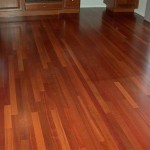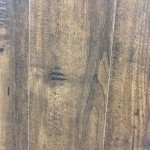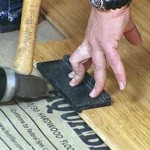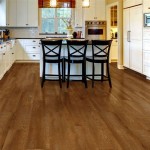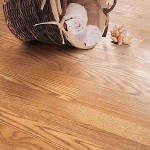Essential Aspects of Installing Hardwood Flooring on Slab
Installing hardwood flooring on a concrete slab can elevate your home's aesthetic appeal and value. However, it requires proper preparation and a step-by-step approach to achieve a flawless and durable result. This guide will provide you with essential aspects to consider for successful hardwood flooring installation on a concrete slab.
1. Moisture Control: Moisture is the nemesis of hardwood flooring. Concrete slabs are prone to moisture transmission, which can cause the wood to buckle, warp, or crack. To prevent this, you need to install a moisture barrier between the slab and the flooring. A vapor retarder or moisture barrier can effectively block moisture from seeping into the wood.
2. Subfloor Preparation: The subfloor plays a crucial role in supporting the hardwood flooring. For a slab floor, you need to level it to ensure the flooring sits evenly. Any unevenness can cause the planks to creak or buckle. Grinding or leveling the slab using a concrete grinder can create a smooth and level surface before installing the underlayment.
3. Underlayment Installation: An underlayment provides a cushioning layer between the concrete slab and the hardwood flooring. It helps reduce sound transmission, provides thermal insulation, and evens out any irregularities in the slab's surface. Choose an underlayment specifically designed for concrete slabs, as it will have moisture-resistant properties.
4. Hardwood Flooring Selection: Not all hardwood flooring species are suitable for installation on concrete slabs. Choose moisture-resistant species like oak, maple, or hickory, which are less prone to moisture damage. Prefinished hardwood flooring can be a practical choice, as it eliminates the need for sanding and finishing after installation.
5. Installation Method: There are two main methods for installing hardwood flooring on a concrete slab: glue-down and floating. Glue-down involves adhering the planks directly to the subfloor using an adhesive. This method provides a secure and durable bond but requires a smooth and level subfloor. Floating involves installing planks that interlock and float on the underlayment, without being attached to the subfloor. It is a less labor-intensive method and can be a good option for DIY enthusiasts.
6. Expansion Gaps: Hardwood flooring naturally expands and contracts with changes in temperature and humidity. To accommodate this movement, it is important to leave expansion gaps around the perimeter of the room and around any fixed objects like walls or columns. These gaps allow the flooring to move without buckling or warping.
7. Acclimation: Before installing the hardwood flooring, allow it to acclimate to the room's temperature and humidity for several days. This process helps the wood adjust to the new environment, reducing the risk of buckling or warping after installation.
By following these essential aspects, you can ensure a successful and long-lasting hardwood flooring installation on a concrete slab. Remember to consult with a professional flooring contractor if you require further guidance or if your project involves complex requirements.

Installing Wood Flooring Over Concrete Diy

How To Install A Wood Subfloor Over Concrete Rona

How Do I Install A Hardwood Floor On Concrete Slab The Carpet Guys

Installing Hardwood Floors On Concrete Subfloors

Q A Solid Wood Floors Over Concrete Slabs Jlc

Ask Fred How Do I Install Wood Floor Below Grade Schedule

Installing A Hardwood Floor Over Concrete Slab American Information Center

How To Install A Wood Subfloor Over Concrete Rona

8 Awesome Wood Floor Over Concrete Gallery Solid Hardwood Floors Installing Diy

Installing Engineered Hardwood On Concrete Twenty Oak
Related Posts


